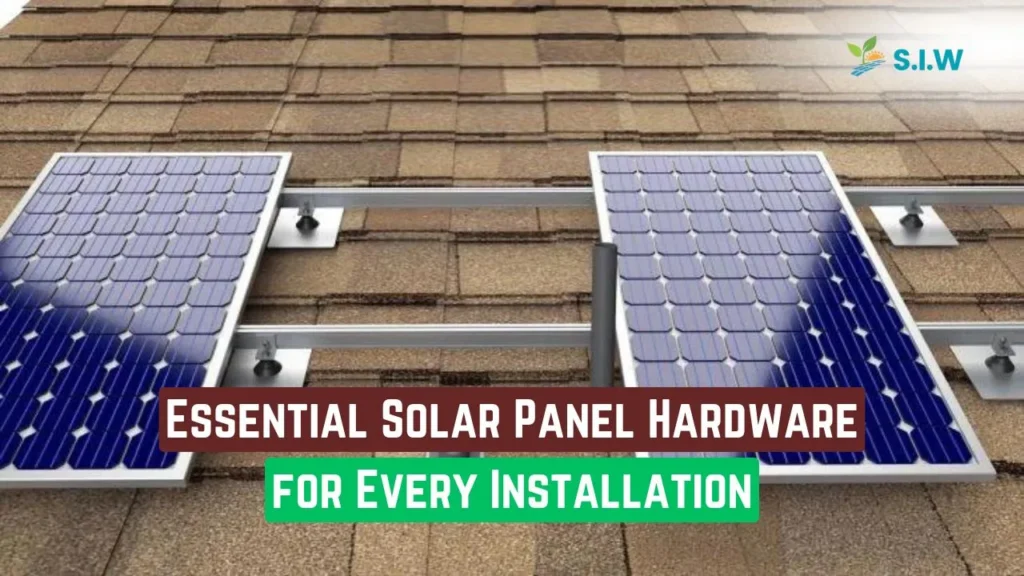Solar energy is increasingly becoming a preferred choice for powering homes and businesses due to its sustainability and cost-effectiveness. A successful solar panel installation requires key hardware components that ensure long-term efficiency and reliability. Below, we delve into the essential solar panel hardware for every installation, providing a comprehensive guide for professionals and homeowners alike.
1. Solar Panels (Photovoltaic Modules)
At the core of every solar energy system, photovoltaic (PV) modules convert sunlight into electricity. Solar panels are categorized into three main types:
- Monocrystalline Panels: Known for high efficiency and sleek design, they are made from a single crystal structure. These panels are ideal for installations with limited roof space.
- Polycrystalline Panels: More affordable but slightly less efficient than monocrystalline panels, they are made from multiple silicon crystals. Perfect for larger roofs where space is not a limitation.
- Thin-Film Panels: Flexible and lightweight, thin-film solar panels are suitable for unconventional installations like curved surfaces. However, they tend to be less efficient.
2. Mounting Systems
A robust and secure mounting system is essential to hold the solar panels in place. Proper installation maximizes the panel’s exposure to sunlight and extends its lifespan. There are several mounting systems available based on the installation environment:
- Roof Mounts: Most common in residential applications, roof mounts securely fix solar panels to the roof. They come in two variations:
- Flush Mounting: Panels are installed parallel to the roof surface, offering minimal visual disruption.
- Tilt Mounting: Panels are mounted at an angle to optimize sunlight exposure, often used in areas with lower sun exposure.
- Ground Mounts: Used where roof space is insufficient or unavailable, ground mounts are installed on poles or frames at ground level. These systems can be adjusted for optimal sun exposure.
- Tracking Systems: Advanced systems that adjust the position of solar panels throughout the day to follow the sun’s trajectory, significantly increasing energy production.
3. Inverters
Solar panels generate direct current (DC) electricity, which must be converted into alternating current (AC) for home or business use. Inverters play a crucial role in this process, and there are three main types:
- String Inverters: Commonly used in residential setups, they are cost-effective but less efficient when panels face shading issues.
- Microinverters: Installed on each solar panel, microinverters maximize energy production even when individual panels are shaded. They provide greater system flexibility and reliability.
- Power Optimizers: Similar to microinverters, power optimizers are installed on each panel but work in conjunction with a central string inverter. They offer the benefits of both systems, balancing efficiency and cost.
4. Solar Charge Controllers
For systems that include batteries for energy storage, a solar charge controller is essential. This device regulates the amount of electricity flowing from the solar panels to the batteries, preventing overcharging and prolonging battery life. The two main types of charge controllers are:
- PWM (Pulse Width Modulation) Controllers: Affordable and simple, PWM controllers reduce the power from the panels to the battery voltage.
- MPPT (Maximum Power Point Tracking) Controllers: More efficient, MPPT controllers adjust the panel’s output to maximize energy transfer to the battery, especially in less-than-ideal weather conditions.
5. Batteries for Energy Storage
Energy storage systems allow solar installations to store excess electricity for use during the night or in cloudy weather. Batteries are essential for off-grid systems and can enhance grid-tied systems. The main types of batteries used in solar installations include:
- Lead-Acid Batteries: Affordable but with shorter lifespans, these are commonly used in off-grid installations.
- Lithium-Ion Batteries: More expensive but offering longer lifespans, higher energy density, and better performance, lithium-ion batteries are the preferred choice for modern solar energy systems.
- Flow Batteries: Ideal for large-scale energy storage, these batteries offer long-term storage capacity but are currently less common due to their high cost.
6. Wiring and Cabling
Proper wiring is fundamental to any solar panel system. High-quality, durable wires are necessary to safely transfer electricity between the panels, inverters, charge controllers, and batteries. The most commonly used cables are:
- PV Wire: A thick, insulated wire that connects solar panels to other components. It is weather-resistant and designed for outdoor use.
- Grounding Wire: Ensures the system is grounded, protecting it from surges and lightning strikes.
- Conduit: Metal or plastic piping that shields the wires, preventing damage from external elements or rodents.
7. Fuses and Circuit Breakers
For safety and system protection, fuses and circuit breakers are crucial. They safeguard the solar system from electrical overloads and short circuits. Each component, from the panels to the batteries and inverter, must have the correct fuse size and breaker ratings to ensure the system operates efficiently and safely.
8. Monitoring Systems
A solar energy monitoring system tracks the performance of your installation, providing real-time data on energy production and system health. Monitoring systems come in two main forms:
- Onsite Monitoring: Typically integrated into the inverter, onsite monitoring allows users to track system performance directly from the device.
- Remote Monitoring: More advanced, remote monitoring systems connect to the internet and allow users to track their solar energy production via a smartphone or computer. These systems are highly beneficial for identifying maintenance needs or troubleshooting issues.
Conclusion
Installing a solar energy system requires attention to detail and the right hardware components. Each part plays a vital role in ensuring the system operates efficiently and safely. From selecting the correct type of solar panel to integrating the right inverter and energy storage solution, the hardware choices you make will directly impact the system’s performance and longevity. As solar technology advances, keeping up with the latest hardware innovations is key to maximizing energy production and cost savings.








